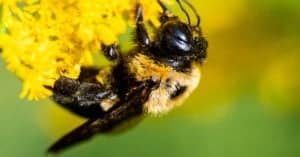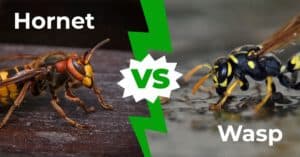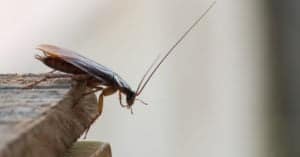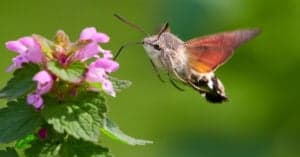Mud/Dirt Dauber Vs Wasp
@media (min-width: 481px) {
.mobile-top-content {
display: none;
}
}
#mobileTopContentCTACarouselControls { overflow: hidden; text-overflow: ellipsis; white-space: nowrap; }
.mobile-top-content .more { color: #fff; }
.mobile-top-content a { color: #fff; text-decoration: underline; }
.mobile-top-content a:hover { color: #fff; text-decoration: underline; }
@media (max-width: 480px) {
.mobile-top-content {
background-color: #06a10b;
color: #fff;
text-align: center;
/*height: 60px;
padding-top:5px;*/
font-size:80%;
/* display: block; */
margin: 0px -30px;
}
}
Identifying certain insects around your home can be an important step when considering pest control. Today, we are going to be taking a look at the difference between dirt daubers and wasps in order to understand what makes them unique. Learning to correctly identify different insects and animals is important for anyone interested in ecology or just wanting to know what kind of nest they found in their backyard. Additionally, proper identification can actually aid through allowing natural pest control, as we will find out later. Let’s get started!
Comparing mud/dirt daubers and wasps
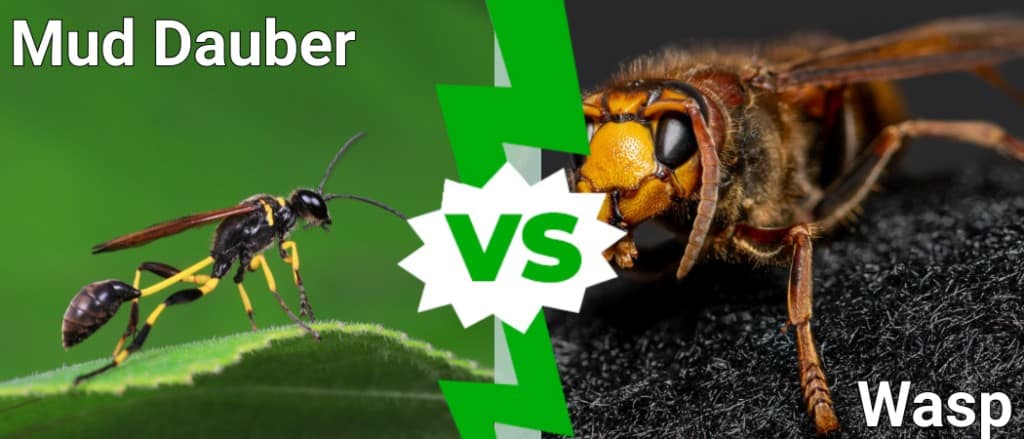
A-Z-Animals.com
| Mud Dauber | Paper wasp | |
| Nests | Constructed with mud and dirt, tubular shape | Constructed from chewed wood fibers and saliva, umbrella shape with hexagonal structure |
| Colony size | Solitary wasps | 20-40 wasps per nest |
| Prey | Almost exclusively spiders, occasionally pollen and nectar | Mostly nectar and pollen |
| Sting | Not aggressive, mild but painful sting | Territorial and can be aggressive, mild but painful sting |
Key Differences Between Dirt Daubers vs Wasps
Understanding the difference between dirt daubers and wasps begins with correct naming. Technically, dirt daubers are wasps. “Wasps” are a broad category of insects that include 75,000 species. Paper wasps, yellowjackets, tarantula hawks, and even mud daubers are all species of wasp within the category. Still, when most people refer to a “wasp,” they are referring to the paper wasp. As such, we are going to be comparing the two today.
The biggest differences between dirt daubers (often referred to as mud daubers or mud wasps) and paper wasps are their nests, their colony size, and their prey.
Mud daubers build their nests by shaping mud into tubes, while paper wasps chew wood into a pulp and use it as a construction material. Additionally, mud daubers are considered solitary wasps, while paper wasps are social wasps that live in colonies. Finally, paper wasps can be aggressive and stings are relatively common, while mud daubers are less aggressive and won’t attack unless repeatedly provoked.
Let’s look at these differences, plus a few more, in-depth.
Mud/Dirt Dauber Vs Wasp: Nests

Sarah2/Shutterstock.com
The nests of dirt daubers and paper wasps are all tied up in the name. Mud daubers get their names from the females of the species. When they go to construct their nests, they gather mud from the surrounding area and form it with their strong mandibles. The resulting structures are tube-like, generally .5 inches wide and 2-4 inches long. Within the tubes are small chambers that females lay eggs in. Mud daubers’ nests are common sights in almost every covered outdoor building, especially in gazebos and covered picnic areas.
Paper wasps also get their name from the way they build their nests. Where mud daubers use mud and dirt to build their nests, paper wasps chew wood fibers into a pulp that they mix with their saliva. The resulting paste is then spread as a construction material and, when dried, closely resembles a natural paper. Their nests resemble handle-less umbrellas, with a small connection point holding it to an overhang and hexagonal entrance on the bottom. On average, they can be 4-5 inches in diameter, although some species of wasp create much larger structures.
Mud/Dirt Dauber Vs Wasp: Colony size

Brian Fish – Public Domain
Mud daubers and paper wasps lead very different social lives! Daubers are part of a group of wasps known as “solitary wasps.” Solitary wasps are sometimes known as hunting wasps, and they are relatively common among the wasp family. They live alone and spend their day hunting, with most of them reproducing by laying their eggs in a paralyzed prey victim (usually a spider). Mud daubers belong to this group of wasps, and each female will usually carry a paralyzed spider into her nest, lay an egg in it, and seal it away in a chamber.
Paper wasps are colony insects, unlike the dauber. In most colony-based wasp species, there is a queen that overwinters in a hidden location, emerging in the warm months to begin building nests. Once construction has begun, a paper wasp colony can house as many as 20-40 individuals, mostly determined by the amount of time the colony has had to work on the nest. The hexagonal structures under the “umbrella” are actually larval chambers where eggs are laid, sealed in, and grown into adult wasps.
Mud/Dirt Dauber Vs Wasp: Prey
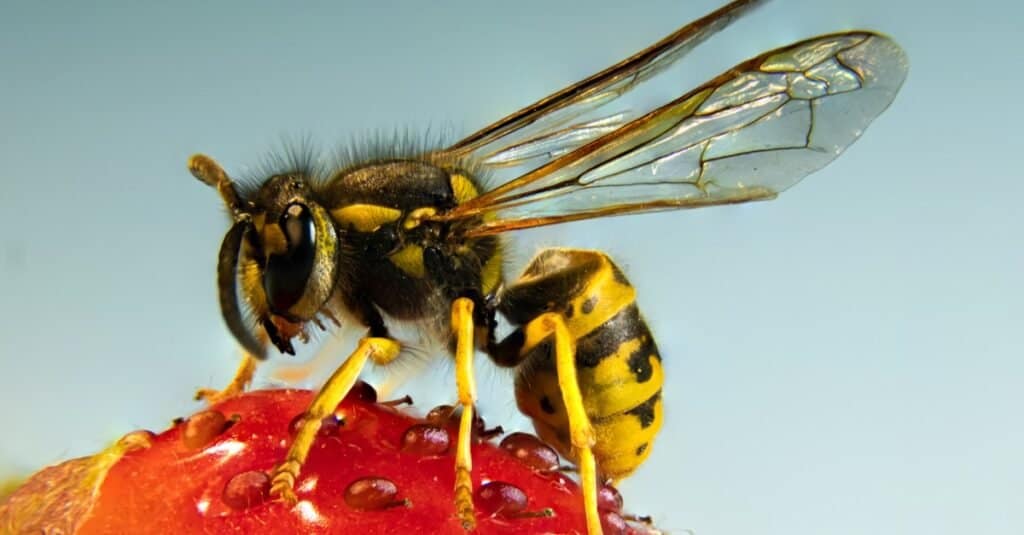
Thomas Hochreutener/Shutterstock.com
Most solitary wasps, daubers included, specialize in a particular type of prey. Most species of dauber are expert spider hunters and can kill as many as 25-30 spiders per tube of their nest. With the number of spiders that daubers kill, they act as a natural form of pest control. They generally target crab spiders, orb weavers, jumping spiders, and brown and black widows. Since they are so good at killing spiders, killing or removing daubers is generally a bad idea. They help keep spider populations in check, especially dangerous ones.
Paper wasps are much less predatory than their solitary cousins. Colony wasps get most of their nutrients from nectar and pollen, much as a bee would. Additionally, they are known to feed on other sweet liquids like those from fruits and human gardens. They act as important pollinators in the wild. Although they mostly drink nectar and eat pollen, they also hunt caterpillars when they are looking to nourish and feed their larva.
Mud/Dirt Dauber Vs Wasp: Sting
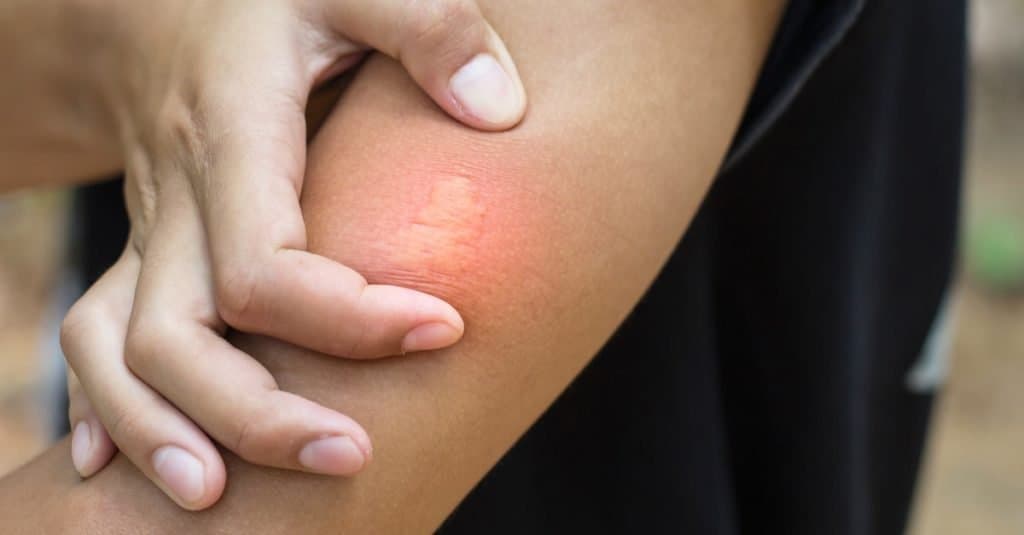
WIRACHAIPHOTO/Shutterstock.com
Mud daubers, like all wasps, have the ability to sting when threatened. All wasps have their own chemical concoction that determines how their venom works and how it feels, but the dauber and the paper wasp are similar. Daubers, however, are known to be much less territorial when it comes to their nests and personal space. Stings do hurt, but they are relatively rare in humans, and a dauber would prefer to avoid confrontation than risk death for a sting that wouldn’t kill a large animal.
Paper wasps have a similar-feeling sting to a dauber, only they are known to be more aggressive and territorial. Wasps will defend their nests with their life and are known to attack humans who get too close. As such, stings involving humans usually involve a paper wasp, especially since the places they build nests are places that humans would more likely frequent. Thankfully, both stings are known to be mild, and only those with a known allergy would need to be worried.
More from A-Z Animals
.more-snake-card-image { max-height:140px !important; }
@media (min-width: 481px) {
.mobile-top-content {
display: none;
}
}
#mobileTopContentCTACarouselControls { overflow: hidden; text-overflow: ellipsis; white-space: nowrap; }
.mobile-top-content .more { color: #fff; }
.mobile-top-content a { color: #fff; text-decoration: underline; }
.mobile-top-content a:hover { color: #fff; text-decoration: underline; }
@media (max-width: 480px) {
.mobile-top-content {
background-color: #06a10b;
color: #fff;
text-align: center;
/*height: 60px;
padding-top:5px;*/
font-size:80%;
/* display: block; */
margin: 0px -30px;
}
}
Identifying certain insects around your home can be an important step when considering pest control. Today, we are going to be taking a look at the difference between dirt daubers and wasps in order to understand what makes them unique. Learning to correctly identify different insects and animals is important for anyone interested in ecology or just wanting to know what kind of nest they found in their backyard. Additionally, proper identification can actually aid through allowing natural pest control, as we will find out later. Let’s get started!
Comparing mud/dirt daubers and wasps

A-Z-Animals.com
| Mud Dauber | Paper wasp | |
| Nests | Constructed with mud and dirt, tubular shape | Constructed from chewed wood fibers and saliva, umbrella shape with hexagonal structure |
| Colony size | Solitary wasps | 20-40 wasps per nest |
| Prey | Almost exclusively spiders, occasionally pollen and nectar | Mostly nectar and pollen |
| Sting | Not aggressive, mild but painful sting | Territorial and can be aggressive, mild but painful sting |
Key Differences Between Dirt Daubers vs Wasps
Understanding the difference between dirt daubers and wasps begins with correct naming. Technically, dirt daubers are wasps. “Wasps” are a broad category of insects that include 75,000 species. Paper wasps, yellowjackets, tarantula hawks, and even mud daubers are all species of wasp within the category. Still, when most people refer to a “wasp,” they are referring to the paper wasp. As such, we are going to be comparing the two today.
The biggest differences between dirt daubers (often referred to as mud daubers or mud wasps) and paper wasps are their nests, their colony size, and their prey.
Mud daubers build their nests by shaping mud into tubes, while paper wasps chew wood into a pulp and use it as a construction material. Additionally, mud daubers are considered solitary wasps, while paper wasps are social wasps that live in colonies. Finally, paper wasps can be aggressive and stings are relatively common, while mud daubers are less aggressive and won’t attack unless repeatedly provoked.
Let’s look at these differences, plus a few more, in-depth.
Mud/Dirt Dauber Vs Wasp: Nests

Sarah2/Shutterstock.com
The nests of dirt daubers and paper wasps are all tied up in the name. Mud daubers get their names from the females of the species. When they go to construct their nests, they gather mud from the surrounding area and form it with their strong mandibles. The resulting structures are tube-like, generally .5 inches wide and 2-4 inches long. Within the tubes are small chambers that females lay eggs in. Mud daubers’ nests are common sights in almost every covered outdoor building, especially in gazebos and covered picnic areas.
Paper wasps also get their name from the way they build their nests. Where mud daubers use mud and dirt to build their nests, paper wasps chew wood fibers into a pulp that they mix with their saliva. The resulting paste is then spread as a construction material and, when dried, closely resembles a natural paper. Their nests resemble handle-less umbrellas, with a small connection point holding it to an overhang and hexagonal entrance on the bottom. On average, they can be 4-5 inches in diameter, although some species of wasp create much larger structures.
Mud/Dirt Dauber Vs Wasp: Colony size

Brian Fish – Public Domain
Mud daubers and paper wasps lead very different social lives! Daubers are part of a group of wasps known as “solitary wasps.” Solitary wasps are sometimes known as hunting wasps, and they are relatively common among the wasp family. They live alone and spend their day hunting, with most of them reproducing by laying their eggs in a paralyzed prey victim (usually a spider). Mud daubers belong to this group of wasps, and each female will usually carry a paralyzed spider into her nest, lay an egg in it, and seal it away in a chamber.
Paper wasps are colony insects, unlike the dauber. In most colony-based wasp species, there is a queen that overwinters in a hidden location, emerging in the warm months to begin building nests. Once construction has begun, a paper wasp colony can house as many as 20-40 individuals, mostly determined by the amount of time the colony has had to work on the nest. The hexagonal structures under the “umbrella” are actually larval chambers where eggs are laid, sealed in, and grown into adult wasps.
Mud/Dirt Dauber Vs Wasp: Prey

Thomas Hochreutener/Shutterstock.com
Most solitary wasps, daubers included, specialize in a particular type of prey. Most species of dauber are expert spider hunters and can kill as many as 25-30 spiders per tube of their nest. With the number of spiders that daubers kill, they act as a natural form of pest control. They generally target crab spiders, orb weavers, jumping spiders, and brown and black widows. Since they are so good at killing spiders, killing or removing daubers is generally a bad idea. They help keep spider populations in check, especially dangerous ones.
Paper wasps are much less predatory than their solitary cousins. Colony wasps get most of their nutrients from nectar and pollen, much as a bee would. Additionally, they are known to feed on other sweet liquids like those from fruits and human gardens. They act as important pollinators in the wild. Although they mostly drink nectar and eat pollen, they also hunt caterpillars when they are looking to nourish and feed their larva.
Mud/Dirt Dauber Vs Wasp: Sting

WIRACHAIPHOTO/Shutterstock.com
Mud daubers, like all wasps, have the ability to sting when threatened. All wasps have their own chemical concoction that determines how their venom works and how it feels, but the dauber and the paper wasp are similar. Daubers, however, are known to be much less territorial when it comes to their nests and personal space. Stings do hurt, but they are relatively rare in humans, and a dauber would prefer to avoid confrontation than risk death for a sting that wouldn’t kill a large animal.
Paper wasps have a similar-feeling sting to a dauber, only they are known to be more aggressive and territorial. Wasps will defend their nests with their life and are known to attack humans who get too close. As such, stings involving humans usually involve a paper wasp, especially since the places they build nests are places that humans would more likely frequent. Thankfully, both stings are known to be mild, and only those with a known allergy would need to be worried.

